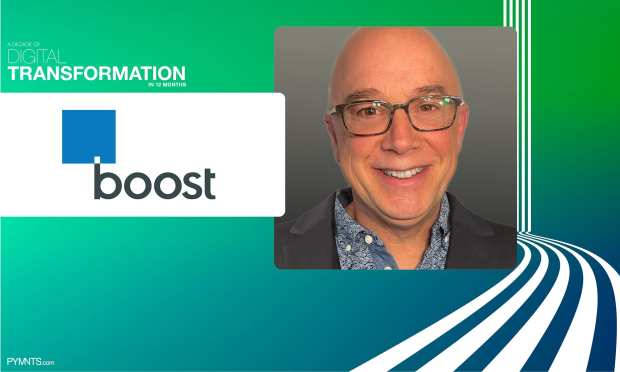Digitized B2B Payments Will Likely Continue To Grow Post-Pandemic

In A Decade of Digital Transformation in 12 Months, 46 C-suite executives spoke with PYMNTS for its Q2 eBook on what the world will look like as recovery rolls on and the next iteration of normal rolls out. In this excerpt, Carl Mazolla, chief strategy officer at Boost Payment Solutions, shares his thoughts on how digitized B2B commercial card payments and acceptance can be as simple as personal payments, and why he expects them to continue to grow in acceptance post-pandemic.
Consumer trends toward payment digitization began to transition long before the pandemic. Contactless payments – thanks to innovative options like Apple Pay and Google Pay – led the transition. And before that, leaders like PayPal in the online retail space and Venmo in the consumer-to-consumer arena led the way, with consumers understanding and valuing the ease, convenience and security in using their products. No longer did consumers have to carry their cards on their person or type sensitive card data into a web browser.
Thanks to these innovative companies, consumers have begun to expect and value more passive transaction flows regardless of where the point of purchase may be. For consumers, the digitization of payments offers convenience and reduced risk of sensitive data, and the pandemic fast-forwarded the use of these digitized payments across the consumer ecosystem. And many technologies and trends, once they are adopted in our personal lives, quickly find their ways into our professional lives.
In the world of business-to-business (B2B) payments, the pandemic forced many to digitize workflows and explore alternate payment options, such as commercial credit cards, as a means of survival. These businesses are just now beginning to realize the broader benefits associated with these newer payment methods – not only as a matter of convenience and reduced risk, but also as a means to reduce processing costs, extend working capital and facilitate faster payments.
While many businesses have historically had challenges with processing commercial credit card payments, B2B payment processing using a commercial card is now almost as simple as setting up a Venmo or PayPal account.
Straight-through processing (STP) technology, which has been commonplace in the consumer payments space, is now making B2B commercial card payments just as easy. Suppliers can send an invoice to their buyer, and after the buyer completes their audit of the invoice to the services/products received, payment is as simple as hitting the “pay” button within their AP automation software. No sensitive data is ever shared with the participants or exposed over the processing networks. Most B2B processing platforms will create a reconciliation document in the supplier’s preferred format and send it to the supplier to easily digest into their ERP system.
Taking commercial card payments even further, buyers and suppliers can establish unique agreed-upon acceptance terms. These “acceptance on your terms®” rule-based agreements, such as those offered through Boost Intercept®, expand the benefits of digitized B2B payments. A supplier can establish rules for each specific buyer, such as the amount of payment, timeliness of payment and many other variables. For example, suppliers can accept payments for a certain buyer as long as they are under $10,000 and paid within 10 days of the invoice date, and any payment falling outside those established rules must be paid via alternative methods.
Digitized B2B commercial card payments and acceptance can be as simple as your personal payments and offer more control of your payment acceptance program — and will likely continue to grow in acceptance post-pandemic.
